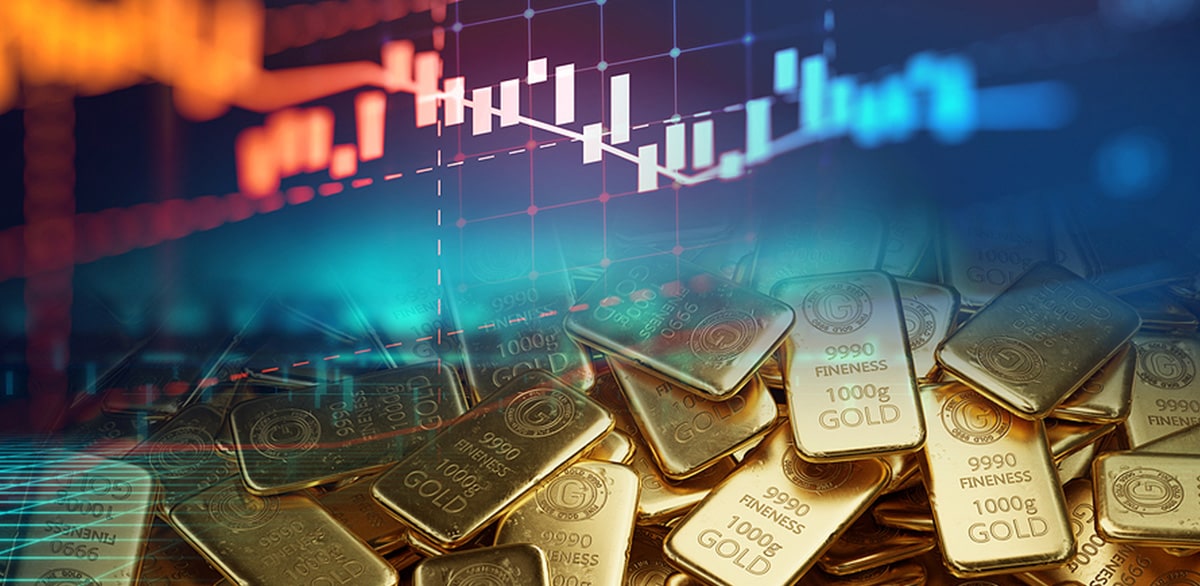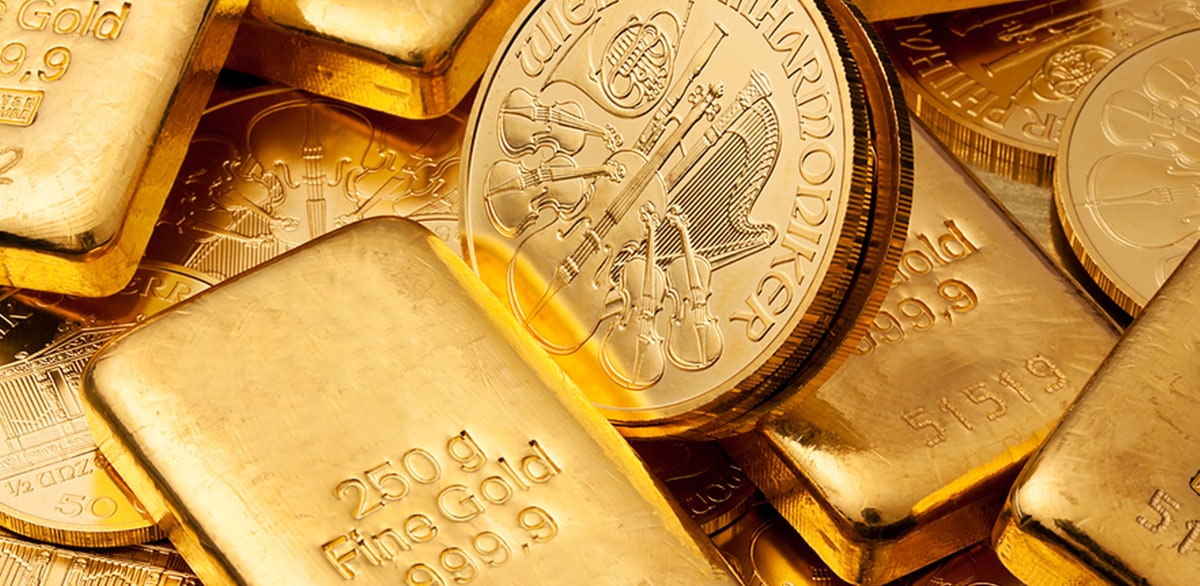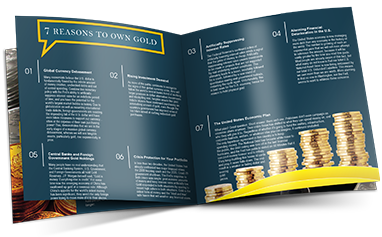
| Paper Gold | Physical Gold | |
|---|---|---|
| Value | Tracks the physical price of gold (i.e. spot price) | Represents the true price of gold |
| Ownership | Gives investors paper certificates of ownership | Allows investors to hold tangible assets |
| Types | Mutual funds, ETFs, etc. | Bullion bars, coins, ingots, etc. |
| Counterparty Risk | Subject to third-party providers | Investors have greater control |
Many investors are perplexed by the value difference between the spot price of gold and physical gold assets. In reality, there are two primary ways for investing in precious metals: paper assets and physical assets. Both are subject to different market forces which lead to disparate prices. Before investing in precious metals, it’s crucial to understand the difference between paper gold and physical gold and the advantages and downsides of each.
What’s the difference between paper and physical gold?
Paper gold refers to an indirect investment in gold through mutual funds, ETFs, and other assets that offer exposure to the gold market without requiring investors to purchase physical assets. For example, SPDR Gold Shares, which trade as GLD on the New York Stock Exchange, are among the most popular paper gold assets with the largest backing of physical gold[1] of any ETF.
These investments are referred to as paper gold because they involve the buying and selling of contracts rather than physical assets. These paper assets are intended to reflect the price of gold, giving investors exposure to the precious metal without handling physical products.
On the other hand, physical gold refers to tangible gold products such as bullion bars, ingots, and coins. Physical gold assets are significantly rarer than their paper counterparts due to limited global supply. It’s estimated that for one transaction of physical gold, paper gold sees more than 200 trades.[2]
👉 Related: Spot Price vs Physical Price of Gold & Silver: Why There’s a Difference
Is paper gold real gold?
Paper gold assets are designed to track the price of gold to give investors exposure without having to worry about buying and storing physical assets. However, most paper gold investments such as ETFs, mutual funds, and futures contracts are backed by physical gold. The party offering exposure to these assets usually holds a certain amount of tangible gold to add backing to their investments. Some exchanges allow investors to redeem their paper gold holdings for physical gold with some specific stipulations.
Which is better – physical gold or paper gold?
Both physical and paper gold assets have their merits. However, physical gold exposes investors to all the advantages gold has to offer. Plus, paper gold is subject to more market manipulation as whales have the power to drive up prices or cause a widespread selloff to improve their standing. Physical gold isn’t subject to the same whims, making it a sturdier asset.
Paper Gold Advantages

High Liquidity
It’s easier to sell paper gold because there’s no physical transaction involved. These assets can be traded as quickly, seamlessly, and smoothly as stocks. This high liquidity makes it easier for investors to transfer their assets into cash.
Low Barrier of Entry
Investors face fewer barriers when investing in paper gold. The vast majority of trading platforms offer exposure to paper gold assets including ETFs, mutual funds, and mining stocks. There’s no need to set up a separate account or scour through physical products.
No Storage Necessary
Storage is a major question mark for investors as they get into physical precious metals. Sticking with purely paper metals prevents you from having to worry about this additional step since everything is virtual.
Paper Gold Downsides
Counterparty Risk
As with most non-tangible assets, owning paper gold opens up investors to counterparty risk. In other words, there’s always a potential that other parties involved (i.e. mutual funds, account managers, etc.) fail to uphold their end of the deal which could put your investment in jeopardy.
Volatility
Despite gold’s reputation as a stable and long-term asset, this precious metal can experience price volatility in paper forms. The whole paper market is dictated by gold futures which rely on speculation instead of inherent value. Additionally, institutional investors wield immense power in timing the ups and downs of the market which means everyone else is along for the ride.
Manipulation
In addition to strongly influencing price action, big-name investors have also engaged in outright manipulation. For example, traders at banking giant J.P. Morgan were convicted of spoofing, fraud, and attempted price manipulation in 2022. These practices took place over nearly a decade. Paper gold assets are more subject to this manipulation than their physical cousins.
👉 Related: The End of Gold Price Manipulation? What Investors Should Know
Physical Gold Benefits

Physical Ownership
One of the greatest advantages of tangible gold is being able to take physical ownership of your investments. Instead of having digital numbers on a screen, you have direct control over the assets.
Low-Risk
Although the US dollar is one of the strongest currencies, the greenback has lost 99% of its value when compared to gold. This makes physical gold one of the sturdiest long-term assets since the majority of paper assets are directly linked to the USD.
Privacy
Physical gold offers investors significantly more privacy and anonymity versus paper gold and other virtual assets. This is a growing concern as the government makes strides toward instituting a digital dollar. Tangible assets are the final safe havens of privacy when it comes to investments.
Bartering
Before the US abandoned the gold standard, this physical metal was the backing of all fiat currency in the world. For centuries, gold has been a defacto international currency that everyone recognizes. This makes it a viable bartering instrument no matter the global economic conditions.
True Diversification
Physical gold has always been a go-to asset for investors looking to optimize portfolio diversification. In its physical form, gold offers true diversity because it’s detached from the factors that influence the price of paper assets such as stocks and paper gold.
👉 Related: Why Central Banks Are Buying Up Record Amounts of Gold
Variety
There’s plenty of variety among physical gold assets, making it easy for investors to find what works for their risk tolerance, personal preferences, and budgets. Working with a precious metals advisor can make it easier to determine which gold assets work best for your investment goals.
Physical Gold Cons
Storage (Theft Risk)
The tangible nature of physical gold exposes investors to theft risks that don’t exist when investing in paper assets. That’s why investors are highly encouraged to keep their gold assets with highly secure, private, and reputable facilities.
Manipulation
Generally speaking, physical gold assets are significantly less susceptible to price manipulation due to their inherent value and tangible nature. Gold bullion is a minor exception since these prices are at a slight risk of market exploitation. Most other physical products offer protection from these deceitful practices.

Everything you need to know to get started in Precious Metals
Learn how precious metals can strengthen your portfolio, protect your assets and leverage inflation.
Request the Free Guide
